I have a 100 x 100 matrix with two types of elements. The first are continuous variables between 0 and 100 (actually discrete in the program but they represent something that is continuous and should thus have a continuously scaled legend), the other type is a discrete variable with three possible values (-1, -2, -3). I used this matrix in this question.
The goal is to make a heatmap of the continuous variables while distinguishing the areas with a discrete negative value. Currently, I am using ggplot with geom_raster (see code snippet at bottom of this question) to plot the following heat map.
However, The uniformly gray-colored area at the top and right consist of the negative discrete values and should have a different color/pattern than the other part of the graph. For example, the areas should be white with a label indicating the value (see the second image). Is there a way to do this with ggplot? In the ideal world, the graph would have a legend for the continuous range and one guide for the three discrete values.
Bonus question: is it possible to draw a line at the borders, i.e., draw a line if the next element in the matrix has a different value. Now I do this manually (see second code snippet) by just plotting many segments but this cannot be the way to go (and I do not succeed in combining this with the ggplot heat map).
The first code snippet (which makes the heat map)
minRate = 0;
maxRate = 100;
colnames(df) = NULL
df = melt(df)
colnames(df) = c("col", "row", "value")
# geom_raster takes the center as input argument
df[,"col"] = df[,"col"] - 0.5
df[,"row"] = df[,"row"] - 0.5
# Without labels
ggplot(df, aes(x = col, y = row, fill = value)) +
geom_raster() +
theme_bw() +
labs(fill="Rate (%)") +
theme(plot.margin=unit(c(3,3,3,2),"mm"), legend.position = "right") +
scale_fill_gradient(low="black", high="white", limits=c(minRate, maxRate)) +
scale_x_continuous("state 1", expand = c(0,0), limits=c(0,100)) +
scale_y_continuous("state 2", expand = c(0,0), limits=c(0,100))
And the second code snippet (which only plots the borders):
printPolicy <- function(df, title)
{
n = nrow(df)
plot(NA, xlim=c(0, n), ylim=c(0, n),
xlab="Machine 0", ylab="Machine 1", main=title,
las=1, yaxs='i', xaxs='i')
for (x0 in 1:(n-1))
{
for (x1 in 1:(n-1))
{
# Horizontal lines
if (df[x0, x1] != df[x0+1, x1])
segments(x1-1, x0, x1, x0)
# Vertical lines
if (df[x0, x1] != df[x0, x1+1])
segments(x1, x0-1, x1, x0)
}
}
}


